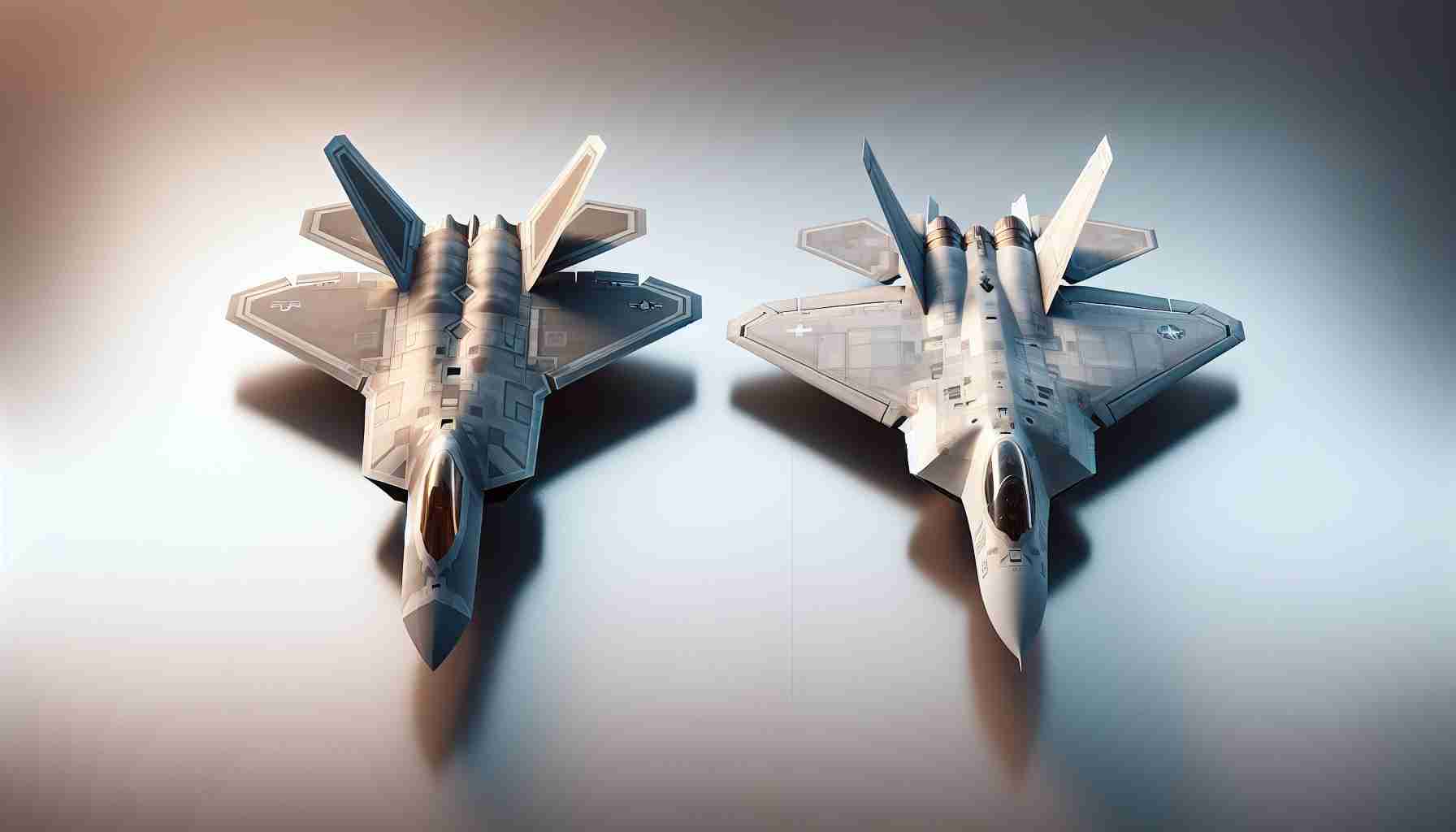In the realm of modern air combat, few aircraft can rival the strategic capabilities and advancements of the F-22A Raptor and the Su-57. Both represent the pinnacle of their respective countries’ aerospace technology, showcasing extraordinary performance, stealth, and agility. This article examines the features, strengths, and weaknesses of these two advanced fighter jets, presenting a comprehensive comparison of these aerial titans.
The F-22A Raptor, developed by Lockheed Martin for the United States Air Force, is recognized for its unparalleled combination of stealth, speed, and agility. It was introduced into service in 2005 and quickly established itself as a dominant force in air superiority. Boasting a top speed of over Mach 2.25 and advanced avionics, the F-22 can conduct both air-to-air and air-to-ground missions. Its stealth technology, including radar-absorbent materials and an innovative design, significantly reduces its radar cross-section, making it difficult for enemy radar to detect.
In contrast, the Su-57, a product of Sukhoi and the first stealth fighter developed by Russia, is designed to fulfill both air superiority and ground attack roles. Entering service in 2020, the Su-57 is equipped with advanced thrust-vectoring engines that provide it with exceptional maneuverability in combat situations. Its supercruise capability allows it to sustain supersonic flight without using afterburners, enhancing fuel efficiency and reducing infrared signatures.
Both aircraft feature advanced avionics systems and sensors to enhance battlefield awareness. The F-22 is equipped with AN/APG-77 phased array radar, allowing for long-range detection of threats and target tracking. The Su-57, however, utilizes the N036 Byelka radar, which incorporates a network of sensors to increase situational awareness and jamming resistance. This difference plays a significant role in how each aircraft engages adversaries.
When it comes to maneuverability, the Su-57 has notable advantages due to its cutting-edge design and vectoring thrust engines, enabling it to perform extreme aerial maneuvers. This agility could provide a crucial edge in dogfighting situations, potentially allowing the Su-57 to outmaneuver opponents effectively. On the other hand, the F-22, although extremely agile, may not be able to match the Su-57’s capabilities in this area, relying instead on its stealth and situational awareness to engage from advantageous positions.
Combat experience further influences the assessment of these aircraft. The F-22 has a proven track record in actual conflict scenarios, providing the U.S. Air Force with insights into its performance under pressure. In contrast, the Su-57, while featuring modern technology and a potent design, has yet to demonstrate its capabilities in combat environments to the same extent, leaving some questions about its real-world effectiveness.
In summary, the choice between the F-22A Raptor and the Su-57 hinges on several factors, including mission requirements, combat scenarios, and specific operational needs. The F-22 excels in stealth, avionics, and combat experience, while the Su-57 offers superior maneuverability and a highly-redundant multi-role design. Both jets are exemplars of modern military aviation, and the ongoing advancements in technology will likely continue to shape their development and capabilities in the years to come. Ultimately, determining which is “better” depends on the specific context and objectives of military forces utilizing these formidable aircraft.
Improve Your Knowledge on Advanced Fighter Jets: Tips, Life Hacks, and Fascinating Facts
In the fast-evolving world of aerospace technology, understanding the nuances of advanced fighter jets like the F-22A Raptor and the Su-57 can enhance your appreciation of modern military aviation. Here are some tips, life hacks, and interesting facts that will deepen your insights into these remarkable aircraft.
1. Stay Updated with Aviation News
The field of military aviation is continually advancing, and keeping up with the latest developments can be exciting and educational. Utilize resources such as aviation magazines, defense-focused websites, and forums to stay informed. Websites like Defense News offer regular updates on new technologies and fighter jet capabilities.
2. Leverage Simulation Games
Consider trying flight simulation games that feature advanced fighter jets. These games often replicate the aerodynamics, capabilities, and operational strategies of real-life aircraft like the F-22 and Su-57. Engaging in these simulations can provide a practical understanding of maneuvers and tactics used in air combat.
3. Create a Comparative Analysis
To delve deeper, compile a comparison chart of aircraft specifications, capabilities, and mission profiles. Assess strengths and weaknesses systematically. This could help in visualizing differences in stealth technologies, speed, maneuverability, and combat experience.
4. Explore Virtual Tours and Documentaries
Many aerospace museums and military organizations offer virtual tours that include detailed presentations of these advanced jets. Look for documentaries that focus on F-22 and Su-57 development and operations. Documentaries often provide historical context and expert commentary that enrich your knowledge.
5. Attend Air Shows and Military Expositions
Air shows frequently feature demonstrations of various military aircraft, including the F-22 and Su-57. Attending these events can provide a firsthand experience of the jets in action. You might also gain insights by speaking with pilots and crew members who operate these aircraft.
6. Understand the Technological Innovations
Research the innovative technologies that distinguish these jets, such as stealth design, supercruise capability, and intelligent avionics systems. Understanding these technologies helps appreciate the complex engineering involved in modern fighter jet design.
7. Learn About Geopolitical Context
The operational deployment of these advanced aircraft is heavily influenced by geopolitical factors. Understanding the strategic purpose of the F-22 and Su-57 within their respective air forces can provide context for their design and operational capabilities.
8. Get Involved in Online Discussions
Join aviation forums or social media groups dedicated to military aviation. Engaging in discussions with aviation enthusiasts and experts can expose you to diverse perspectives and deeper insights into the field.
Interesting Fact: Did you know the F-22A Raptor was designed to be a “first day of war” air superiority fighter? Its capability to achieve air dominance before a full-scale conflict begins underscores its pivotal role in combat scenarios.
In conclusion, whether you are a casual enthusiast or a budding aviator, these tips and insights can enhance your understanding of advanced fighter jets like the F-22A Raptor and Su-57. Incorporating these strategies into your learning journey will not only broaden your knowledge but also keep you engaged with the ever-evolving aviation landscape. For more resources on military aviation, explore U.S. Air Force for reliable information.






















